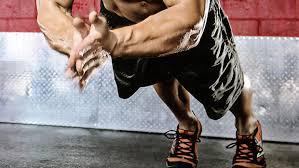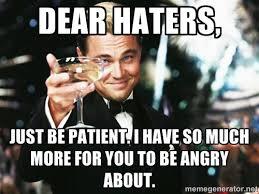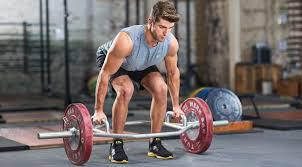Strength, Power and Stretch
There’s so many methods to the madness, and everyone says one type of training is better than the other. Yoga is the best! Heavy deadlifts will revolutionize your life! If you’re going to be athletic you need to do the explosive quick lifts. You’ve heard it all. Plus, we all have busy lives, it’s hard to include all aspects into our training program. Spending 2 hours in the gym 6 days a week isn’t realistic! So, what do you do?

Last year I put together the best training program I’ve ever done, and the results were simply amazing. It was a simple 12-week program that included some yoga elements, some heavy lifting, some midrange lifts, and some explosive lifting. I pre and post tested everyone’s deadlift, bench press, upper and lower body explosive strength, as well as their sit and reach. I wanted to see if stretching really is counterintuitive to getting stronger.
I challenge you to google “does stretching make you weak”. You’ll find a ton of articles claiming long relaxed sustained stretches lengthen the muscle and lower your strength, so DO NOT do it before engaging in any strength training! Here’s my challenge to that, if you have tight shoulders or hips you’ll have a bad press or squat because you can’t safely perform the lift without compromising technique. So now what? When do you stretch? I train really busy clients that need all three elements, but some of them I only see twice a week… and I know they aren’t going to take 20 min out of their day to sit down and touch their toes. So how do I improve all three elements (strength, power, flexibility) with busy business men that realistically only train 2 hours a week?

After unsuccessfully googling and searching through my strength journals for programs that addressed all three elements I decided to create a program myself. I purposely pre and post-test everyone so I could have solid data. If guys started having injuries flair up during the program I’d simply abort the plan and return to our regularly scheduled beatings. This was the format I came up with:
Workout A:
1a) Heavy lower body pull followed by explosive lower body movement
1b) Heavy upper body push followed by explosive upper body movement
1c) Slow sustained hold that stretches the hips followed by another slow sustained stretch that opens up the shoulders and thoracic area.
Finish the remainder of the hour with moderate intensity accessory lifts.
1a) Heavy lower body pull followed by explosive lower body movement
1b) Heavy upper body push followed by explosive upper body movement
1c) Slow sustained hold that stretches the hips followed by another slow sustained stretch that opens up the shoulders and thoracic area.
Finish the remainder of the hour with moderate intensity accessory lifts.
Workout B:
1a) Heavy upper body pull followed by explosive upper body movement
1b) Heavy lower body push followed by explosive lower body movement
1c) Slow sustained hold that stretches shoulder or thoracic area, followed by another slow sustained hold that stretches the hip complex.
Finish the remainder of the hour with moderate intensity accessory lifts.
1a) Heavy upper body pull followed by explosive upper body movement
1b) Heavy lower body push followed by explosive lower body movement
1c) Slow sustained hold that stretches shoulder or thoracic area, followed by another slow sustained hold that stretches the hip complex.
Finish the remainder of the hour with moderate intensity accessory lifts.
So, what happened in 12 weeks? After averaging the numbers, everyone’s deadlift went up 41lbs, bench press went up 14lbs, broad jump improved 6.5”, kneeling med ball throw- up 16”, and sit and reach a 5” improvement. You need to know I didn’t use teenage athletes as my test dummies. Instead several of my existing clients volunteered to do this. My test subjects on average were 42-year-old men that have been training with me for an average of 4.33 years. So, we had a marketed improvement on raw strength, explosive power, and flexibility all at the same time with career and family driven, middle age men that can really only devote 2 hours a week to their fitness. Overall, not too shabby!

You could read this and nit-pick everything to shreds. Some may say the sit and reach is an ineffective way to measure flexibility. Some may claim the participants simply weren’t training that hard originally. Another person may argue 12 middle age men isn’t a sufficient number of participants. To these 12 guys, and myself, we don’t care what you think. The results and the numbers speak for themselves. We jammed all three elements into one program and produced better humans.
If you’d like to learn more about this program or try it yourself don’t hesitate to shoot me an email; rkc.corey@gmail.com
